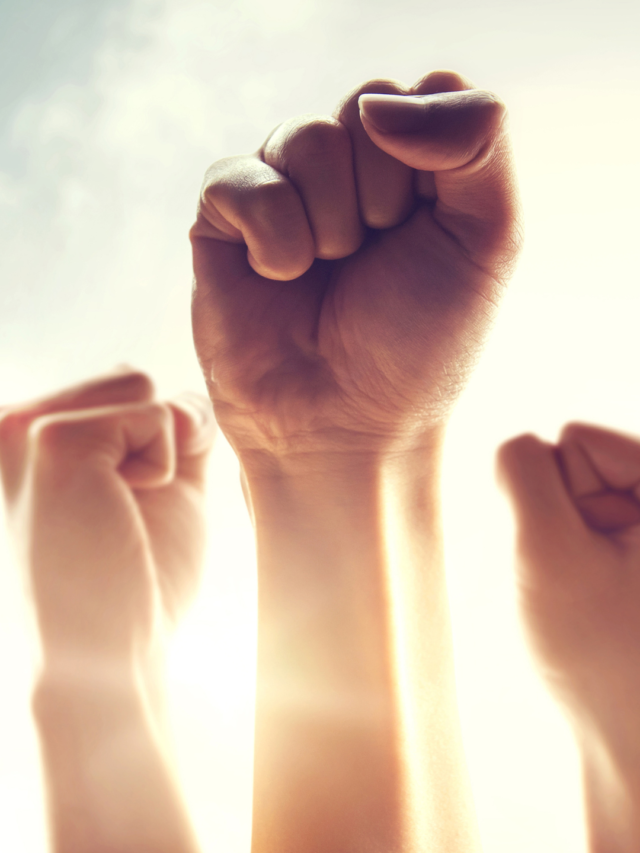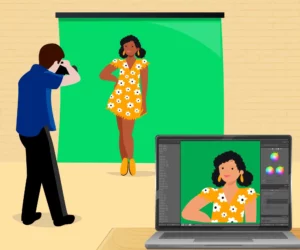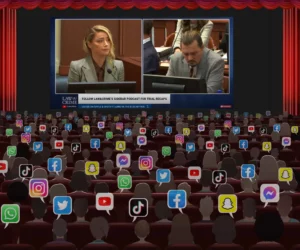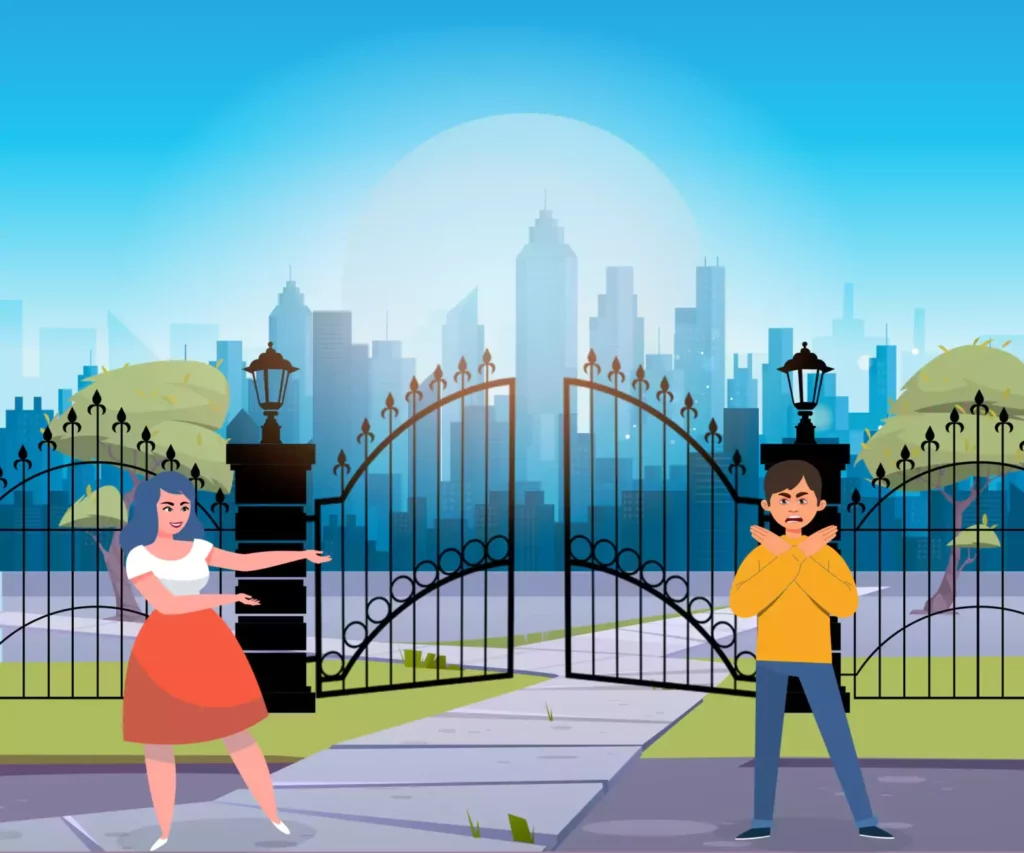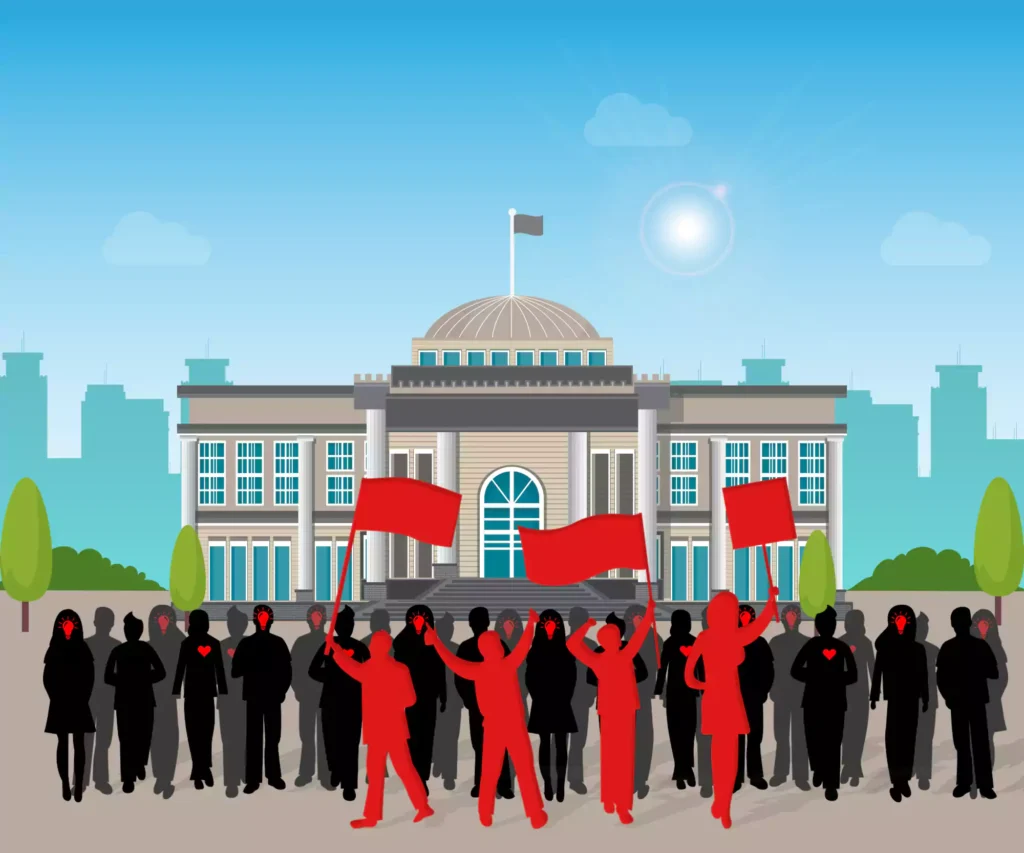
June 1989, Beijing. A long line of tanks moving through the city comes to a halt in front of an ordinary man holding nothing but a bag of groceries.
December 2019, Delhi. A group of three college students protect their colleague from police officers with sticks during larger protests against the controversial Citizenship Amendment Act (CAA) and National Register of Citizens (NRC) bills.
August 1963, Washington D.C. Thousands march for “jobs and freedom” and witness one of the greatest speeches ever about a man and his dream.
There are a few things on which everyone has an opinion, and protests are one of them. A well-intentioned protest generally aims to improve the quality of life that people experience. And historically, protests have been used to achieve just that. Still, governments, authorities, and power, in general, consider them as threats. As a result, every demonstration or rally splits opinion; each one leaves people divided on either side. Those who are for it will present them as powerful mass movements that solve problems and change the world. Those who are against it will portray the protesters as delinquents who are out to destroy all that we hold to be good and pure. And invariably, the argument boils down not to the reason for the protest but its method.
Protests: to peace or not to peace?
On the whole, people tolerate protests as long as they are peaceful. The problem arises when we try to define what that means. Humans tend to think in binaries and extremes, and we have a terrible habit of ignoring everything in between. So, if a few people hold a silent protest with placards and sit in a park, we tend to think it is ‘peaceful’. And therefore, the opposite of that must be those protesters who torch buses and rob stores. That must be ‘violence’.
In defining the terms, we soon begin to make ‘peaceful’ synonymous with ‘passive’. The difficulty with this is that the majority of protests use methods that are somewhere between peaceful and violent.
In which category, for example, would we put protesters who shout slogans and march on busy roads, blocking traffic? Probably neither. These grey areas are significant. Let’s throw another word into the mix—‘disruption’—because that is precisely what this is—not violent but not passive either. To disrupt the ordinary or shake things up is a protest’s point. So, those who are for the protest will typically regard these grey areas as ‘peaceful’. In contrast, those against it will consider them ‘violent’.
However, many such disruptive movements that we admire today were not popular back in the day. For instance, the march on Washington led by Dr Martin Luther King Jr. did not find favour with the majority back in 1963. In hindsight, it is only now that the movement is revered. Dr King’s methods were not violent, but they were not passive by any stretch of the imagination.
The portrayal of a protest
When a protest is set in motion, most people are not actively involved in it. Blame it on logistics or lack of inclination, but these people are not present at the scene. Thus, they can’t witness it for themselves. Their opinions about it are likely formed by what they hear and see through the media. We know this. Even so, we are not always conscious of the fact that the media is far more likely to report the most dramatic aspects of the events that unfold. The media is driven by what attracts viewers or readers, and drama is what attracts people. For how long can one show 990 people marching and holding signs? Surely the ten people who burned a bus will garner more interest.
A person is likelier to watch the news if something dramatic happens. So, the media is more likely to report the drama. But unfortunately, that means ordinary people are more likely to be misinformed.
How the media depicts these protests becomes more critical when considering the responses it evokes. Research indicates that the more extreme the methods of a protest, the less support it gains. People might agree with the cause but not how the protest is being carried out. They, therefore, distance themselves from it. Consequently, the portrayal of a protest in the media can significantly impact the protest itself and the support it can generate.
Do protests work?
Many people think that protests do not achieve anything. One can draw up a long list of protests that either fizzled out or were squashed before they brought about any change to laws or how society functions. This often gives the impression that they achieve nothing. Still, protests do work—albeit not always in the way they intend.
The experience often changes those who participate in protests. Many become life-long activists. Even those who don’t become activists understand their beliefs better. But the changes don’t stop there. The cause or idea of a protest enters public thought and affects those who are not protesters. Protests bring up facts, experiences, and views we might not have thought about before. That often leads to conversations and begins a process of change.
To create radical political and social change is a lengthy affair. Still, you can only do it by changing ordinary people and making them feel for the cause. While some protests can create radical change, others change the hearts and minds of ordinary people. They help us hear what other people are going through and what they are trying to say. We may or may not agree with them but listening to, understanding and feeling for them makes us better people. That is what protests achieve.
Driven by emotion
We are highly emotional beings, and protests appeal exactly to that aspect of us. They ask us to feel for other human beings by seeing them as real people. The root of all protests is emotion, whether it is Greta Thunberg, the woman at the Cannes film festival protesting abuse against women, or millions of Indian farmers against unjust laws. We are often quick to dismiss emotion as irrational or cheap. Still, it remains one of the most critical parts of human life. Emotion is what offers us a connection between our own unique lives and the lives of those who are calling for change.
Take the person commonly known as ‘Tank Man’ (who can be seen in the above video). He became famous because of a photograph that was taken a day after one of the most brutal displays of force in human history. As the tanks roll through the streets, I wonder what this person would have felt. Around him, at that moment, there is no support, no backup, no weapons, no defences. He is outnumbered, with no hope whatsoever, even facing death. Yet he is now a part of the protest and chooses to stand for what he believes in.
Thus, protests are emotionally-driven and also possess the ability to arouse emotions within the hearts of people even at the periphery. This deep, inherent desire for a better life makes protests a thing of the past, a thing of the present, and most certainly, of the future.
